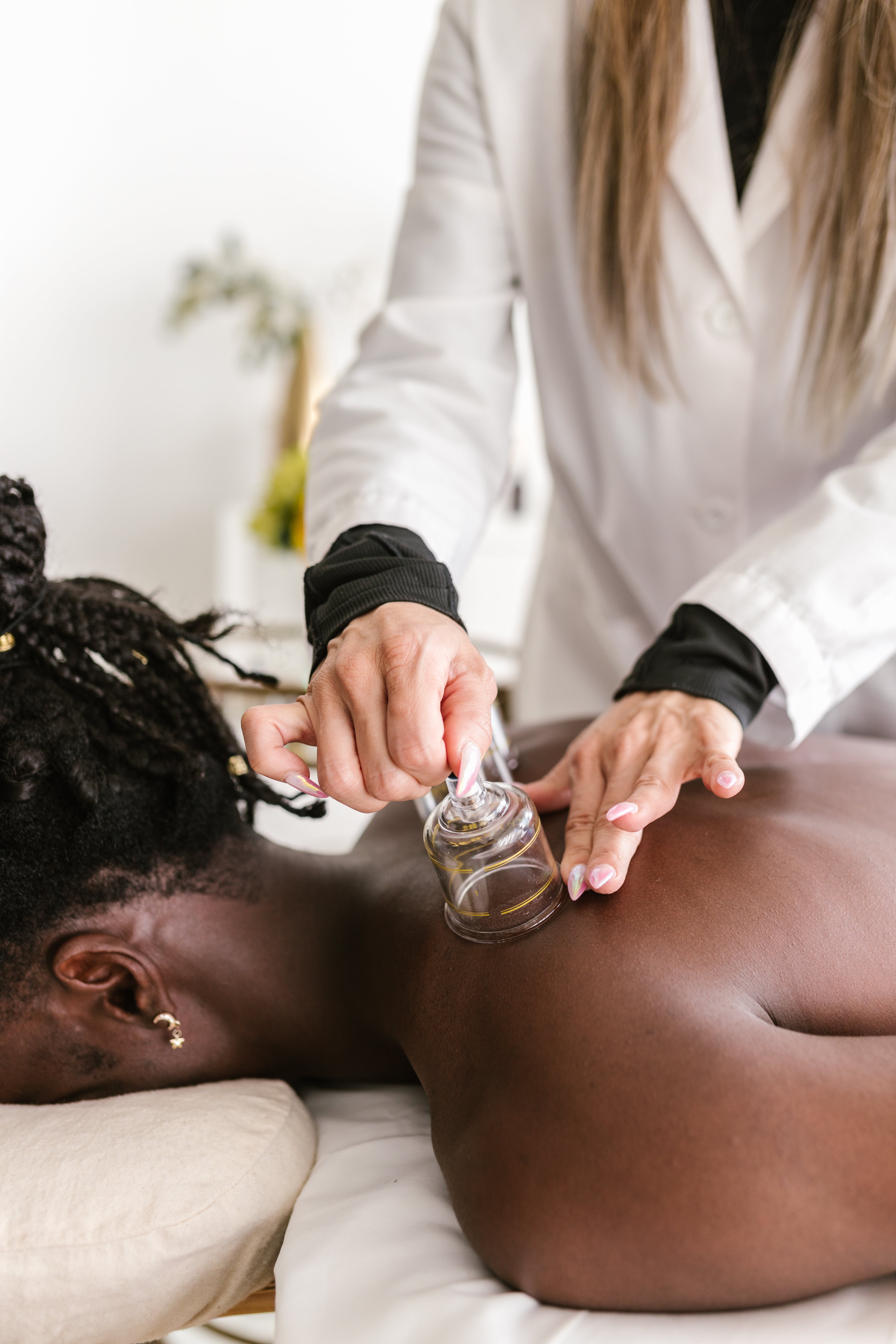
Cupping therapy has been employed for centuries across various cultures as a holistic approach to healing and well-being. Over time, this ancient practice has evolved into two distinct techniques: myofascial cupping and traditional cupping. Both these methods find applications in the realms of physical therapy and chiropractic care, offering unique benefits to patients seeking relief from pain, tension, and improved mobility. In this article, we delve into the differences between myofascial cupping and traditional cupping, their advantages in therapeutic settings, and the exercises that can complement each approach
Myofascial cupping and traditional cupping share a common foundation—utilizing suction to create negative pressure within cups placed on the skin. However, their objectives and techniques diverge significantly.
Myofascial Cupping: This modern approach targets the myofascial system, the interconnected network of fascia and muscles that plays a crucial role in movement, stability, and overall bodily function. Myofascial cupping utilizes silicone cups with a soft, pliable rim that allows practitioners to manipulate the skin and underlying tissues. The suction created by these cups lifts the fascia and promotes blood flow, leading to improved tissue mobility, reduced muscle tension, and enhanced range of motion.

Traditional Cupping: Rooted in traditional Chinese medicine, this technique focuses on balancing the body's energy and addressing issues related to qi, or life force. Glass or bamboo cups are heated, creating a vacuum that draws the skin and underlying tissues upwards. As the cups cool, the skin is pulled into the cups, causing temporary red marks known as "cupping marks." Traditional cupping is believed to stimulate energy flow, release toxins, and promote healing by restoring balance to the body.
Both myofascial cupping and traditional cupping offer distinctive advantages when integrated into physical therapy and chiropractic care.
Myofascial Cupping Benefits:
Traditional Cupping Benefits:
Exercises to Complement Each Approach:
For myofascial cupping:
For traditional cupping:
In conclusion, both myofascial cupping and traditional cupping offer distinct benefits within the realms of physical therapy and chiropractic care. The choice between these techniques depends on individual preferences, goals, and the practitioner's expertise. When integrated thoughtfully, these cupping techniques can enhance the effectiveness of therapeutic interventions, aiding patients on their journey toward improved well-being and optimal health.

430 Montbrook Lane Suite 203
Knoxville, TN
37919
Phone: 865-337-5574
Monday
7am-12pm & 1pm-6pm
Tuesday
7am-12pm & 1pm-4pm
Wednesday
7am-1pm
Thursday
7am-12pm & 1pm-6pm
Friday
7am-12pm & 1pm-4pm
Saturday & Sunday
Closed